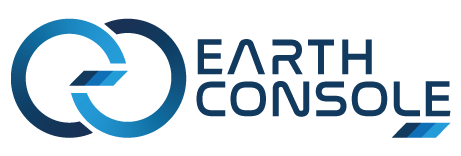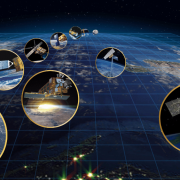Introducing the ESA Heritage Missions Virtual Lab on EarthConsole®
We are excited to announce the launch of the ESA Heritage Missions Virtual Lab hosted on the EarthConsole® platform powered by Progressive Systems. This virtual space offers customized data processing services to harness the inestimable legacy left by the Heritage Missions, all accessible via single sign-on.
If you are not familiar with Heritage Missions, they consist of over 45 non-operational earth observation missions, including cornerstone ESA missions such as the European Remote Sensing satellites, ERS-1 and ERS-2, and ENVISAT. These missions acquired data from various optical, radar, and atmospheric instruments for over 40 years.
As you can imagine, the preservation of data coming from these missions is of key importance for the ongoing environmental research on our planet. When combined with data from new satellites, Heritage Missions data provides a unique opportunity to look back in time and build long-term data series on a diverse range of applications such as climate change, sea levels, surface temperatures, melting ice, earthquakes and volcanic eruptions, atmospheric composition, deforestation, urban mapping and much more.
That’s why we have collaborated with ESA to create this Lab which offers research centers and universities the chance to gain a deeper understanding of the evolution of Earth dynamics over time, by leveraging Heritage Missions data and related processors.
We have made sure to maintain the unique features of EarthConsole® intact, that means ensuring the processing capacity and data are co-located. This reduces the time taken for data transfer and enables completion of scalable processing campaigns within the stipulated time frame of research projects.
The Lab lets you:
- Perform bulk processing campaigns (supervised by EarthConsole® experts) or on demand processing tasks (unsupervised and independently managed by the user) with the Small BAseline Subset – SBAS processor provided by IREA, a scientific and technological research institute belonging to the largest Italian research institution, the National Research Council (CNR). The service provides the possibility to generate soil deformation maps and time series from ERS and ENVISAT data. Additional processors will be integrated in the future.
- Develop, test algorithms and do post-processing activities on a ready-to-use virtual machine with instant cloud data access, software for Heritage data analysis & visualization already installed and flexible computing resources and storage.
- Receive expert support to integrate, in principle, any additional processors.
- Access a set of tools to network and share research results with colleagues: a forum, a repository of processed datasets, and a library with relevant publications and media for consultation.
If you plan to use the lab services for research, educational, or pre-commercial purposes, you may be eligible to submit a sponsorship request to the ESA Network of Resources. If your application will be successful, it would allow you to receive a voucher that may fully cover the costs of the services.
Join the ESA Heritage Missions Virtual Lab today and take advantage of this exceptional opportunity.
To register, simply follow the provided instructions and forms to request the service. And if you have any questions, don’t hesitate to contact us at info@earthconsole.eu with support@earthconsole.eu in cc.
Stay tuned for updates and the upcoming not-to-be-missed invitation to propose your processor to be integrated into the Lab!
This is a project supported by the ESA Network of Resources initiative.




